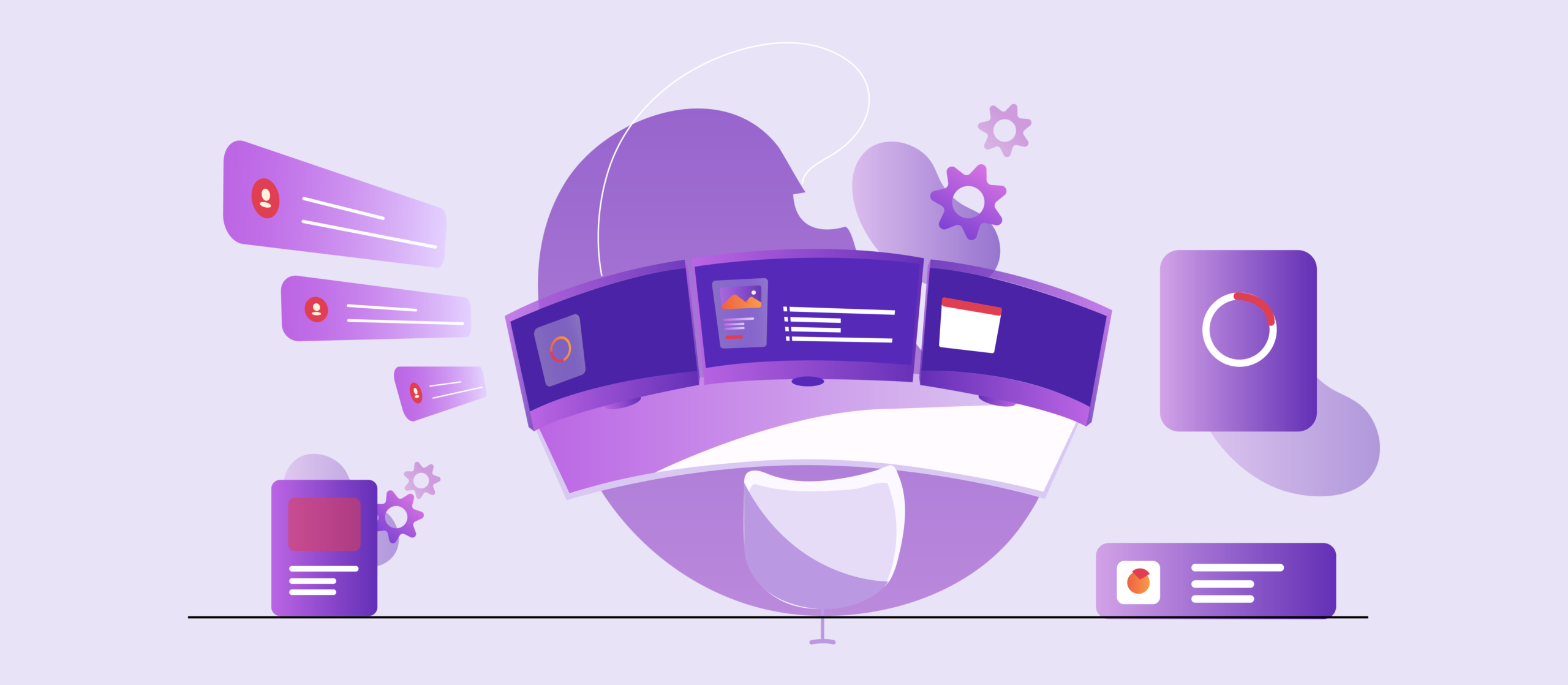UX UI Design Studio




Design is the nucleus of innovation, the core of impact, and the pathway to change. Not only do designers embrace change and transition, but they also break the glass ceiling when it comes to pushing limits and finding new and unique ways to create, innovate and grow.
The pandemic brought a sudden and radical shift in the perception of what design is today. Transitioning into the field or starting your journey post-pandemic may seem daunting at first, but here is a roadmap we’ve created by speaking to people who have done precisely that!
Lollypop, being a UX/UI design studio, is a place that has embraced designers with varied backgrounds, ranging from engineers to architects, homemakers, space designers, and wedding planners, to name a few. Design is something that one innately uses across all domains, be it products, experiences, technology, or business. In fact, stepping into the field with any prior experience adds value to you as a designer. For example, in conversation with one of our colleagues, we learned that being a wedding planner gave her the opportunity to interact with clients day in and day out, which further helped her develop some golden skills like client relations, problem-solving and spontaneous improvisations.
UX design refers to the aspect of design that focuses solely on delivering meaningful and relevant experiences to users via products and/or services. UX designers combine market research, product development, strategy, user psychology, technology, and art to create seamless user experiences for products, services, and processes. A beginner in the field of UX design is ideally good at problem-solving, is detail-oriented, has great people skills, and is well versed with the basics of design.
“No product is an island. A product is more than a product. It is a cohesive, integrated set of experiences. Think through all of the stages of a product or service – from initial intentions through final reflections, from the first usage to help, service, and maintenance. Make them all work together seamlessly.”
— Don Norman, inventor of the term “User Experience”
Getting started
Knowing Your Why
Everything that a designer does always starts with a strong ‘why’. So, before you decide to switch career paths or break into UX, it is important to understand your reason or even just brainstorming and unraveling what it could potentially be. Identify what about design excites you, or think back to the activities you did that made you intrigued about the field, or even try talking to someone who is passionate about design, you might find an answer in this.
Knowing your why will help you articulate your passion for the field and hence, convince your family, friends and potential employers that you have what it takes to make a difference in this space.
Here is an excerpt from a conversation with another colleague – “Over the years, and through college, I learnt that my ‘why’ is associated with helping other humans, and creating an impact or change be it big or small, and design helps me do that.”
Besides knowing your why, it is also important to understand the potential scope of the field you are trying to get into. While most industries took a hit during COVID, the tech industry was amongst the fastest to recover, hence you might have noticed the increase in vacancies in the field of UX. This is because we are moving towards and acknowledging the need for inclusive and user-centric products, services and processes. More and more businesses are looking to build a digital presence after COVID.
Don’t be afraid to push yourself to take the next step!
Here at Lollypop, self-motivation, learning fast, and having an inner drive are very important. Each individual is hungry for opportunities and willing to take initiative.
Before getting to the depth of this, there’s one thing you need to remember and it is that “Great companies don’t hire skilled people and motivate them, they hire already motivated people and inspire them” as said by Simon Sinek.
Once you’ve found you why, you can start talking to people, and understanding design from a professional’s perspective. You can begin by using LinkedIn and/or ADPlist as an avenue to find different opportunities to aid in your process. It can be used to find internship opportunities that will help you build experience, connect with great personalities or even find mentors who can help you not just at the nascent stages of your career but much beyond that.
It is key to mention here that you need not wait till you feel ready to look out for internships or other opportunities to build experience, design is something that comes with practice and the best way to learn is by doing. So always be on the lookout for opportunities to put your design knowledge into practice.
Taking the Leap
Your hiring manager doesn’t expect you to be an expert already.
The portfolio is the crux of your process in being hired. When you are creating a portfolio as a beginner, the hiring manager doesn’t expect you to be an expert already.
The 4 most important things to consider when making a portfolio are:
The hiring manager will look closely at how well you understand the UX design process. The more you understand the process, the better you will be able to explain it. Here, they are also looking at how exhaustively you are able to look at the problem statement or at the problem that you have identified. Hence, it is important to approach any given problem from multiple lenses or points of view and document each finding and decision point in your process.
Communication plays a crucial role in the design and your hiring manager will look at how well you communicate your ideas, your story, or even the reason behind your choices while designing. They would not look into the language but would be more interested in the way you convey your logic and thought process.
The next aspect of your process in being hired is your speed when it comes to learning skills. As mentioned earlier, you will not be a master designer in the span of a few months and you may even have areas you need to work on. This is okay. The hiring manager will look at your ability to learn fast and make corrections to your mistakes. This is generally conveyed through the documentation of iterations in your design process, how one did not work out and those findings or design decisions lead to the next iteration.
Most times one forgets the actual visual presentation of the project. The visual presentation of the project is similar to your first impression. The first impression that you make should be captivating for the hiring manager to choose to look at your work.
Another important factor to consider is the Resume. Whatever background you may come from, a resume for a designer must be clear and well communicated. Here at Lollypop Design Studio, the confidence, passion, desire to learn, and determination that one has towards being an excellent designer is more valued than the labels that come with it. So even if you do not have a design degree or any previous experience, be passionate, make a strong and honest resume, and you might be surprised by how far you may go.
The last but most important point to keep in mind is attitude, attitude, attitude. This point cannot be stressed enough, even if you lack in certain aspects of being a designer, your attitude makes or breaks your chances of being hired. If at any point during the interview, the hiring manager asks you something that you don’t have an answer to – it’s okay to be humble and say you don’t know but will look into it, rather than to make up something and ruin your chances altogether. “Fake it till you make it” can only take you so far.
There’s always space for those who are willing to learn.
Our colleague, a former homemaker, and now a brilliant User Experience designer, transitioned into the UX design field in her 40’s as a complete fresher. She was under confident and faced challenges like the feeling of being late in starting her design career or feeling overwhelmed while handling technology. She barely had any industry experience, but she really pushed herself to become the designer she is today. Being a part of the Lollypop Designathon, with 19-20-year-old co-participants, further helped her in building her network. Her team was also amongst the top 5 winning teams.
What we take away from her story is that it doesn’t matter what your past experiences are, it is the determination to solve problems and the fearlessness to be a beginner no matter what stage of life you are at, that matters. Learning is for everyone.
Challenges and failures are a part of being a designer, so even if you do not make it through to an interview, or feel stuck at some point, don’t be disheartened, just be sure to get feedback constantly, you can always improve and try again. This is where having mentors who believe in you and support you, goes a long way.
Many designers here at Lollypop have similar stories and come from diverse backgrounds, but with a common willingness to learn. We do this by constantly sharing experiences, articles and references through knowledge transfer sessions, continually exposing ourselves to new apps and websites, and reading and staying up to date. Our growth comes from being connected to our colleagues across our offices around the world.
To conclude, design is an industry that holds a lot of responsibility in shaping and creating a better world, even more so when it comes to designing for the digital world. So put your best foot forward, be proactive, take initiatives, keep learning and be on the lookout for opportunities to put these learnings to practice. Keep getting feedback and build yourself from it, talk to people, gather experiences, and stay humble and motivated. You’ve got this!
No matter what type of designer you are aspiring to be or what domain you are dreaming to be a part of, always remember as CEO and founder of Lollypop – Anil Reddy says :
“As time passes by, the labels you might have such as ‘Graphic designer’, ‘Communication Designer’, ‘UX/UI Designer’ will keep changing, but the ‘designers’ remain the same at their core, and what matters most is their ability to create, impact, and deliver efficiently.”
So, enjoy the process and love what you do, the world of design is waiting on you.


